Identity theft reports in Los Angeles are suddenly tumbling
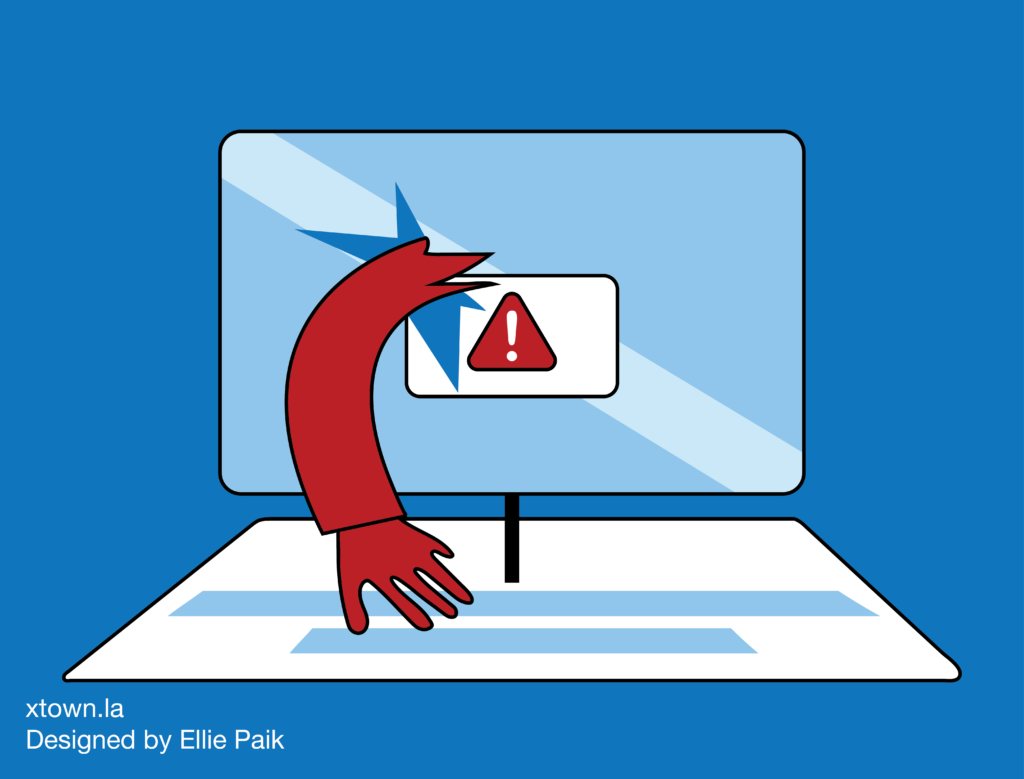
Last year, as Los Angeles recovered from the COVID-19 pandemic, a new crime wave swelled: identity theft. Among those hit hardest were some of the city’s poorest residents.
In 2022 there were 19,917 reports of identity theft in the city of Los Angeles. That was the highest annual total on record, and more than double the previous year’s count, according to publicly available Los Angeles Police Department data.
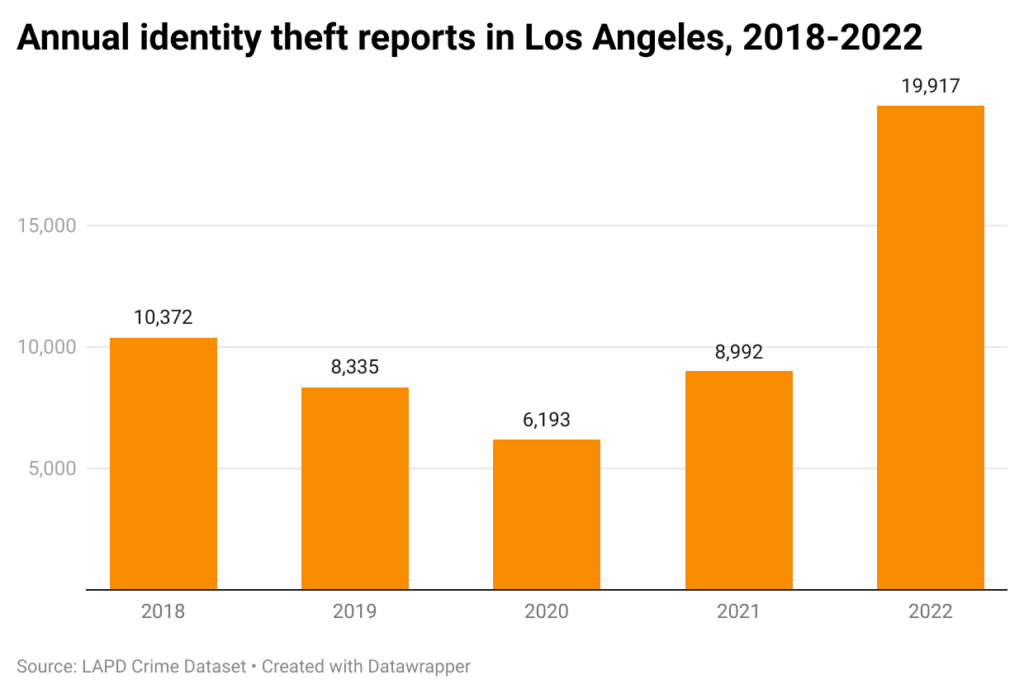
Thieves in particular targeted low-income neighborhoods, stealing from recipients of the Electronic Benefits Transfer (EBT) program, which replaced food stamps and allows individuals to get food and cash with a debit-like card.
There were copious reports of EBT theft, with news stories detailing rings that spoofed cards and emptied customers’ accounts within minutes of funds being deposited.
[Get crime, housing and other stats about where you live with the Crosstown Neighborhood Newsletter]
Now a major change is underway. After peaking at more than 2,100 identity theft cases in December and remaining high through February, reports fell dramatically in March. The downward trend has continued, with 773 cases in May and 624 in June, according to police data (figures could increase, as some reports come in weeks late).
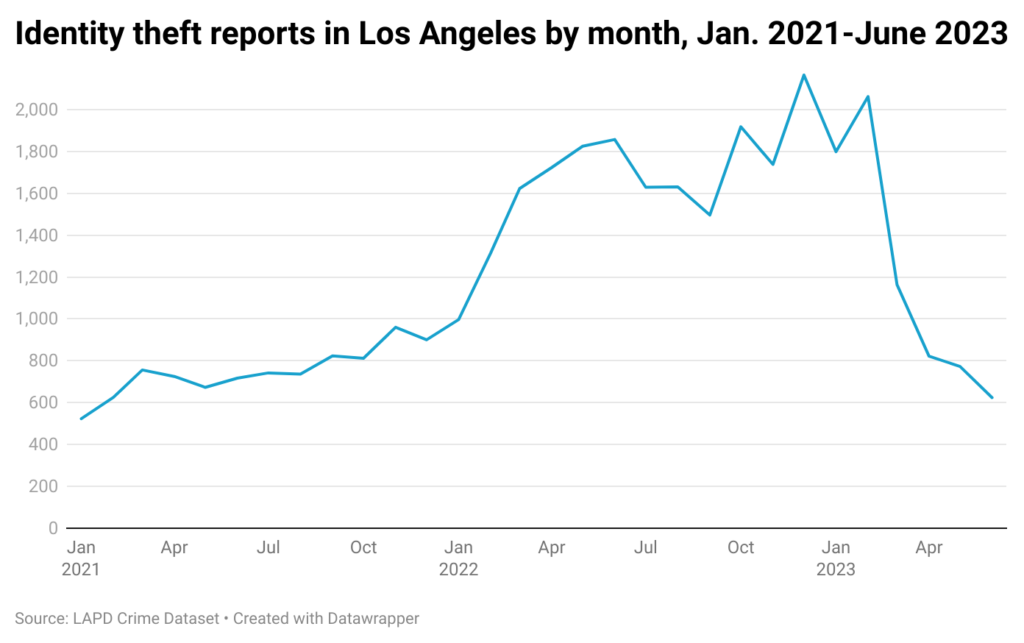
A shift in crime
It is difficult to tell how much the situation has changed. LAPD Det. Rose Angel-Rummings said identity theft often goes unreported, especially with many banks no longer requiring fraud and identity theft victims to file a police report. Instead, most financial institutions have victims complete an internal affidavit detailing the fraud, she said.
Angel-Rummings did say, however, that there has been a reduction in EBT victims.
“EBT scams have decreased as people are back to work, and the majority of those receiving EBT were due to COVID relief,” Angel-Rummings said.
A contributing factor may have been the public attention on EBT crimes, which drew additional focus from law enforcement agencies. That included the arrest of Romanian politician Virgil Negru, who the Los Angeles Times reported pleaded guilty to identity theft for stealing cash and food stamp benefits. He is being held in a Ventura County jail.
An examination of LAPD data shows how closely identity theft reports are aligned with bank crimes. ATM theft using a victim’s pin number peaked at 696 reports in December, according to police data. The count fell 81% to 131 reports in June.
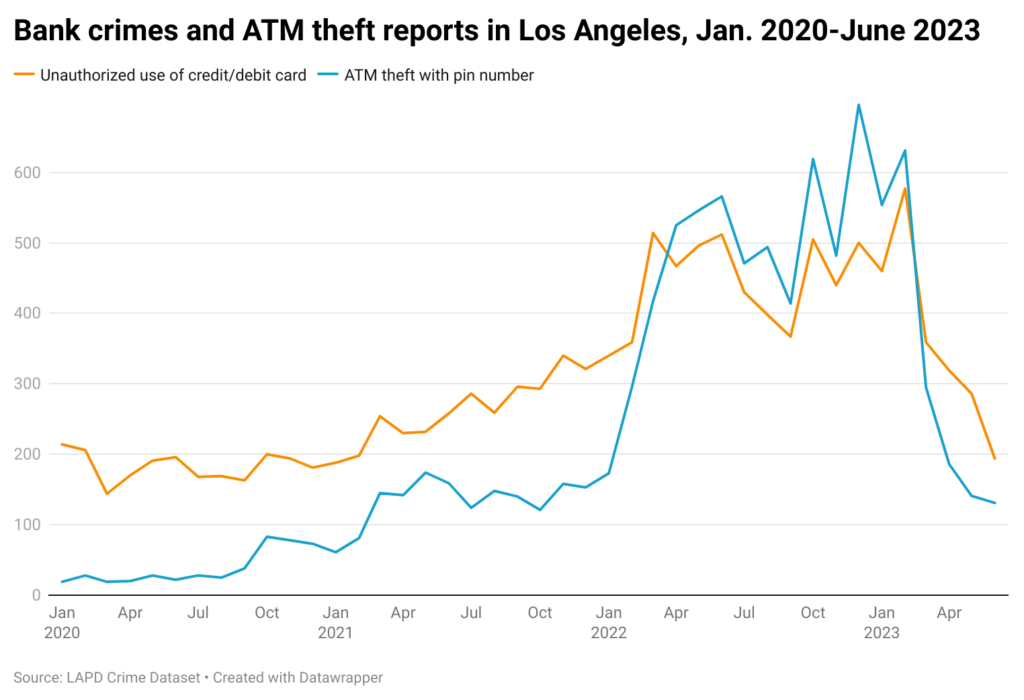
Reports of unauthorized use of a victim’s bank information and unauthorized use of a credit or debit card followed a similar trajectory, reaching record highs by early 2023, then tumbling.
Victimizing drivers
As EBT crimes go down, other versions of identity theft are on the rise. Angel-Rummings noted that rideshare drivers have increasingly become targets.
Several schemes are in play. One involves drivers who have their work account hijacked by a passenger asking to “borrow” their phone during a ride. The LAPD warned of the crime last December.
The LAPD said that in one case, “When the suspect obtained the victim’s phone, he accessed the victim’s bank application and transferred money into his own account.”
Other drivers have been targeted by calls from thieves claiming to represent Uber. The caller persuades the victim to share their personal and bank information, said Nicole Moore, president of advocacy group Rideshare Drivers United and a part-time Lyft driver.
“There’s a lot of new drivers coming in, and they’re absolutely the most vulnerable to these kinds of things,” Moore said.
She said enhanced security measures, such as rideshare companies utilizing two-factor authentication, could help protect drivers.
Other forms of identity theft, including those tied to false employment, are gaining prevalence nationally, according to the Identity Theft Resource Center.
Downtown was the site of 535 identity theft crime reports in the one-year period from July 1, 2022–June 30, 2023, more than any other neighborhood in the city, according to police data. A number of low-income communities in South and Central Los Angeles also recorded high numbers of victims, including Boyle Heights (526 reports) and Westlake (511).
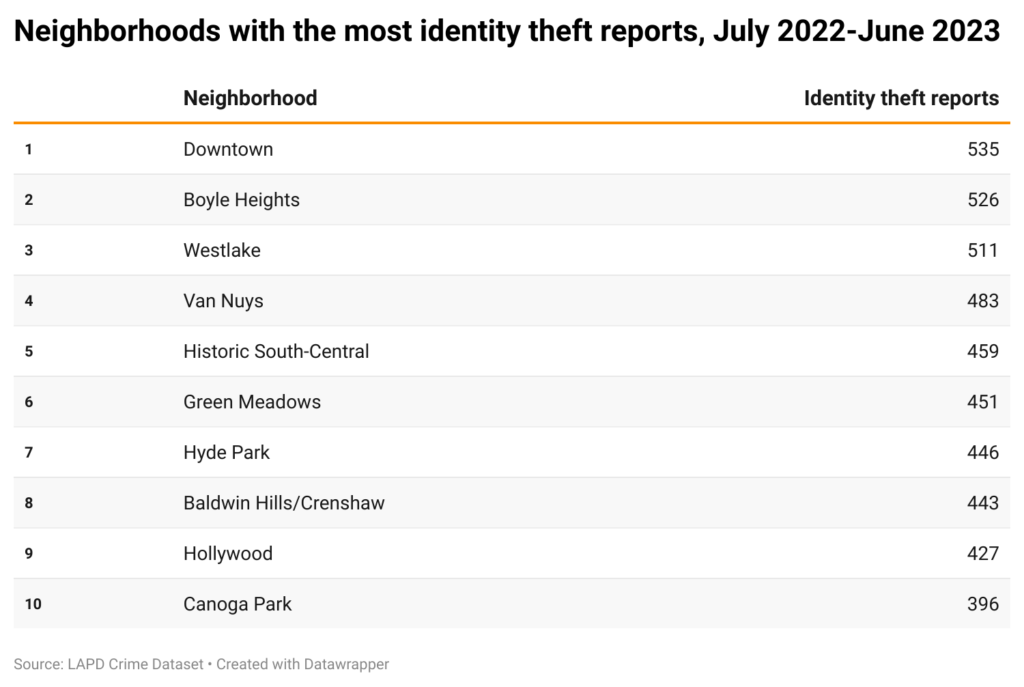
Identity thieves targeted women nearly twice as often as men in the first half of the year.
To avoid becoming a victim of identity theft, law enforcement officials urge people to protect their Social Security number, learn to recognize “phishing” attempts and scam calls, and monitor their credit history. Victims of identity theft who need help, including developing a recovery plan, can visit the Federal Trade Commission’s resource page.
How we did it: We examined publicly available identity theft data from the Los Angeles Police Department from Jan. 1, 2018-June 30, 2023. For neighborhood boundaries, we rely on the borders defined by the Los Angeles Times. Learn more about our data here.
LAPD data only reflects crimes that are reported to the department, not how many crimes actually occurred. In making our calculations, we rely on the data the LAPD makes publicly available. LAPD may update past crime reports with new information, or recategorize past reports. Those revised reports do not always automatically become part of the public database.
Want to know how your neighborhood fares? Or simply just interested in our data? Email us at askus@xtown.la.






